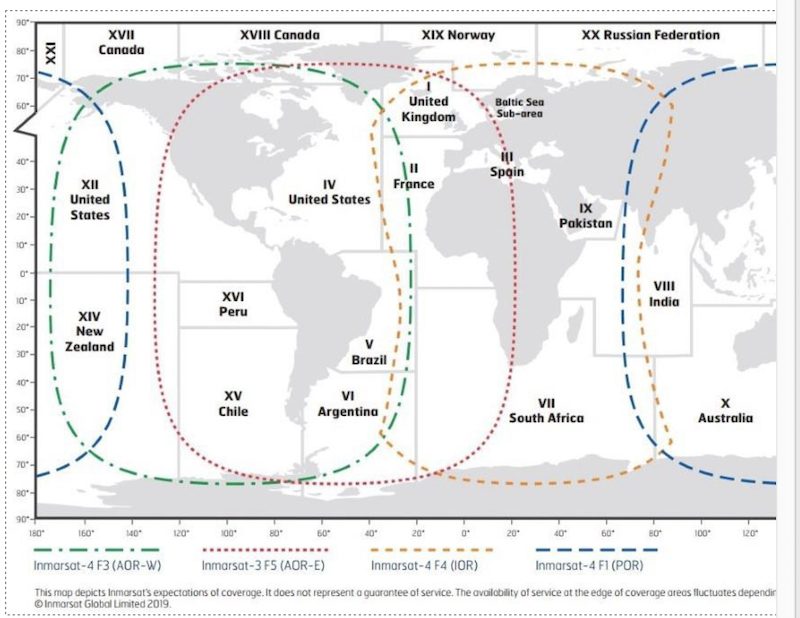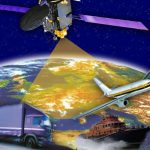Viasat Inc., a global communications company, will acquire Inmarsat, a provider of global mobile satellite communications services, in a transaction valued at $7.3 billion. Two of the four European Geostationary Navigation Overlay Service (EGNOS) broadcasting payloads, part of Europe’s GNSS, ride aboard Inmarsat satellites, Inmarsat 4F2 Emea | PRN Number 126 and Inmarsat 3F2 AOR-E | PRN Number 120. In earlier decades, Inmarsat satllites also hosted payloads for the U.S. Wide Area Augmentation System (WAAS). Inmarsat was set up in 1979 by the International Maritime Organization (IMO) to provide reliable satellite safety communications.
[Imag above: NAVAREAs and METEAREAs with Inmarsat C / Mini C coverage. Courtesy Inmarsat. The METAREA coordinators support the Worldwide Met-Ocean Information and Warning Service (WWMIWS) while the NAVAREA coordinators support the Worldwide Navigation Warning Service. Both provide forecast and warning products to mariners via SafetyNet and Navtex as part of the WWMIWS.]
The combination will create a global communications innovator with enhanced scale and scope to affordably, securely and reliably connect the world. The complementary assets and resources of the new organization will enable the availability of advanced new services in mobile and fixed segments, driving greater customer choice in broadband communications and narrowband services, including the Internet of Things (IoT).
The combined company intends to integrate the spectrum, satellite and terrestrial assets of both companies into a global high-capacity hybrid space and terrestrial network, capable of delivering superior services in fast-growing commercial and government sectors. This advanced architecture will create a framework incorporating the most favorable characteristics of multi-band, multi-orbit satellites and terrestrial air-to-ground systems that can deliver higher speeds, more bandwidth, greater density of bandwidth at high demand locations like airport and shipping hubs and lower latency at lower cost than either company could provide alone.
The combined company will be able to offer:
• A broad portfolio of spectrum licenses across the Ka-, L- and S-bands and a fleet of 19 satellites in service with an additional 10 spacecraft under construction and planned for launch within the next three years.
• A global Ka-band footprint, including planned polar coverage, to support bandwidth-intensive applications, augmented by L-band assets that support all-weather resilience and highly reliable, narrowband and IoT connectivity.
• The ability to unlock greater value from Inmarsat’s L-band spectrum and existing space assets by incorporating Viasat’s beamforming, end-user terminal and payload technologies and its hybrid multi-orbit space-terrestrial networking capabilities.
• Viasat’s highly vertically-integrated technology and service offerings, along with Inmarsat’s extensive eco-system of technology, manufacturing and service distribution.






